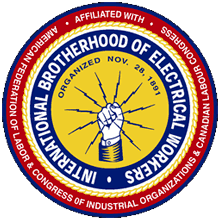March 25, 2016
By Steven Wishnia
New York, NY—A few dozen Lower East Side schoolchildren in toy firefighters’ helmets filled the front row of the annual Triangle Fire memorial Mar. 23. Most of the 146 people killed by the blaze, mostly young immigrant women, lived in the neighborhood, explained United Federation of Teachers district representative Donna Manganello, “so I get children from my schools to come. It’s living history.
Later on, Santos Rodriguez of the New York City Building and Construction Trades Council spoke about the 17  construction workers killed in on-the-job accidents last year, 15 of them on nonunion jobs. “This should not be happening today,” he told the crowd of about 400 people. “The fight is not over.”
construction workers killed in on-the-job accidents last year, 15 of them on nonunion jobs. “This should not be happening today,” he told the crowd of about 400 people. “The fight is not over.”
The March 25, 1911 conflagration in the Triangle Shirtwaist blouse factory was the deadliest building fire in the city before 9/11, Fire Department First Deputy Commissioner Robert Turner told the crowd. It began in a scrap-cloth bin on the eighth floor late in the afternoon, just before the factory closed for the day. Within five minutes, it had raged through the entire eighth floor and erupted on the ninth. Some workers couldn’t escape because an exit was locked. About two dozen died when a poorly built fire escape collapsed. About 50 who were trapped on the ninth floor chose jumping to their deaths over burning.
The crowd at the site, on the corner of Greene Street and Washington Place, included members of about 20 unions, with large contingents from Retail, Wholesale, and Department Store Union Local 338 and Transport Workers Union Local 225. Some held up period blouses on poles, with a sash bearing the name of a victim. At the end, union officials, children, and relatives read out the names of the 146 dead as a firefighter tolled a bell, then laid a white rose next to the building for each one. Others laid down red roses for the victims of factory fires in Bangladesh, Russia, the Philippines, and Hamlet, North Carolina.
Workers in the city first marked the fire’s anniversary in 1914, when firefighters led a march from Brooklyn to the Bronx,d said Mary Anne Trasciatti of the Remember the Triangle Fire Coalition. The International Ladies Garment Workers’ Union, now part of Workers United SEIU, began commemorating it annually in 1961. 
“We not only mourn, but celebrate the birth of fighting for the rights of factory workers,” said Brittney Willis, who graduated from college last year and now handles social media for the Jewish Labor Committee.
Gabrielle Napolitano of Brooklyn, whose great-grandmother Nellie Aera survived because she was off that day, brought her two children. According to family legend, she said, the fire started in the spot where Aera, a 16-year-old immigrant from Tunisia, would have been working.
The fire teaches us that we should “never put profits over the safety of working people,” NYC Central Labor Council President Vincent Alvarez told the crowd.
“You’ve got to know the past to know the future,” said Rick Davis, one of several International Brotherhood of Electrical Workers Local 3 members who attended. “Lock the doors. You kidding me? Sad. And people 16 to 24 years old.”
Workers Local 3 members who attended. “Lock the doors. You kidding me? Sad. And people 16 to 24 years old.”
In the languages the Triangle workers spoke, those themes would be “l’dor v’dor” (from generation to generation), the Jewish tradition of passing on collective memory, and “la lotta continua,” Italian for “the struggle continues.”
A massive garment workers’ strike was broken in 1910, the year before the fire. The result, state Labor Commissioner Roberta Reardon said, was that the Triangle workers made 13 cents an hour for a 13-hour day. Adjusted for inflation, that might be more than the $45 Gladys Calle told the crowd she made for an 11-hour shift in a nail salon—and when she complained about not being paid even that, her boss threatened to get her deported.
“Fast-food workers have always been the bottom of the shoe. Now it’s time to raise up the bottom of the shoe,” McDonald’s worker Jarrell Ware told the crowd. “Everybody who works full-time should be able to go home and take care of their families.” The Triangle workers also died in the struggle for union rights, the Fight for $15 activist added, and “let them not die in vain.”



